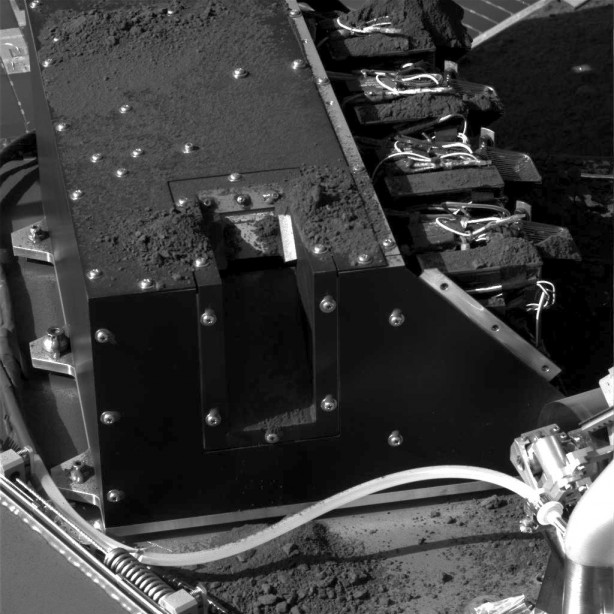The Phoenix Mars Lander is working as fast as it can to dig and deliver as many samples as possible before the power produced by Phoenix’s solar panels declines due to the end of the Martian summer. This image, from Sol 107 (Sept. 12 here on Earth), shows the lander has delivered a sample of soil from the “Snow White” trench to the Wet Chemistry Laboratory. A small pile of soil is visible on the lower edge of the second cell from the top. This deck-mounted lab is part of Phoenix’s Microscopy, Electrochemistry and Conductivity Analyzer (MECA).
The Wet Chemistry Laboratory mixes Martian soil with an water-based solution from Earth as part of a process to identify soluble nutrients and other chemicals in the soil. Preliminary analysis of this soil confirms that it is alkaline, and composed of salts and other chemicals such as perchlorate, sodium, magnesium, chloride and potassium. This data validates prior results from that same location, said Michael Hecht of NASA’s Jet Propulsion Laboratory, Pasadena, Calif., the lead scientist for MECA.
In the coming days, the Phoenix team will also fill the final four of eight single-use ovens on another soil-analysis instrument, the Thermal and Evolved Gas Analyzer, or TEGA.
Source: Phoenix news site


will the lander continue to have enough power as winter sets in to observe co2 ice build up?
@neil: it won’t – the power will go down, and eventually it will become covered in dry ice (CO2).
It’s programming includes a “Lazarus Mode”. Once the winter (twice as long as on Earth) is over, if it’s still “alive”, it’ll check in with Mission Control for possible further instructions
😀
One of the orbits might be able to get some shots of the area as dry ice covers it.
Orbits – should be ‘Orbiters’